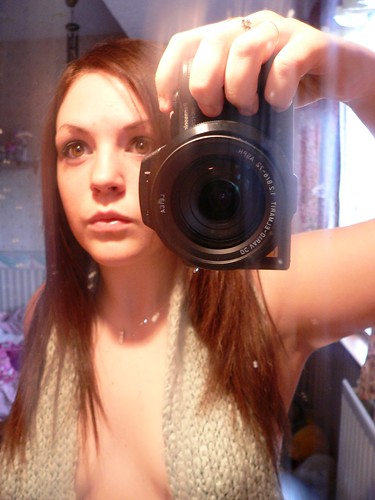How far we've come... or not
I was dining with a photographer friend on Friday, and he was reminiscing about shooting digital photos for Christie's Auction catologue back in 1996.

Now I used to work for a photo company, and we weren't able to go fully digital until 2003, so 1996 is pretty amazing, especially for fine photography.
They used a 4x5 camera made by Leaf with a three exposure process to create each image! The camera had a motorized filter wheel that rotated when you triggered the camera, allowing the chip to use all its pixels for first red, then green and blue. You could watch on the monitor as each layer of color was added to the photo (which probably would make a pretty cool video art project).
 (this photo taken with the Leaf camera)
(this photo taken with the Leaf camera)
While the three exposure process is obviously not very practical (try taking three successive pictures of your mother-in-law without her moving a millimeter), it's actually superior to the way digital photos are taken now. Digital cameras use a single chip, dividing up the pixels on its surface so that some read the red, some green, and some blue. How many are allocated to each color is dependant on the manufacturer's "secret recipe", and some cameras extrapolate (fake) additional pixels for one color or another.

Color film combines three separate layers of photosensitive celluloid, and good quality video cameras use three CCD chips (that's why the tones are so much richer with a three chip camera than with a one chip camera).

So while we've come a long way from three different exposures, digital photography still has a way to go. Apparently, there is a chip out there (which has been around forever) that reads light like a piece of color film, with sensors at different depths that read different colors. Look for the first company to integrate that technology or a 3 CCD technology into their camera to start winning the high end digital battle.

Now I used to work for a photo company, and we weren't able to go fully digital until 2003, so 1996 is pretty amazing, especially for fine photography.
They used a 4x5 camera made by Leaf with a three exposure process to create each image! The camera had a motorized filter wheel that rotated when you triggered the camera, allowing the chip to use all its pixels for first red, then green and blue. You could watch on the monitor as each layer of color was added to the photo (which probably would make a pretty cool video art project).
 (this photo taken with the Leaf camera)
(this photo taken with the Leaf camera)While the three exposure process is obviously not very practical (try taking three successive pictures of your mother-in-law without her moving a millimeter), it's actually superior to the way digital photos are taken now. Digital cameras use a single chip, dividing up the pixels on its surface so that some read the red, some green, and some blue. How many are allocated to each color is dependant on the manufacturer's "secret recipe", and some cameras extrapolate (fake) additional pixels for one color or another.

Color film combines three separate layers of photosensitive celluloid, and good quality video cameras use three CCD chips (that's why the tones are so much richer with a three chip camera than with a one chip camera).

So while we've come a long way from three different exposures, digital photography still has a way to go. Apparently, there is a chip out there (which has been around forever) that reads light like a piece of color film, with sensors at different depths that read different colors. Look for the first company to integrate that technology or a 3 CCD technology into their camera to start winning the high end digital battle.
technorati tags: camera, leaf, digital, film, process, RGB





0 Comments:
Post a Comment
<< Home